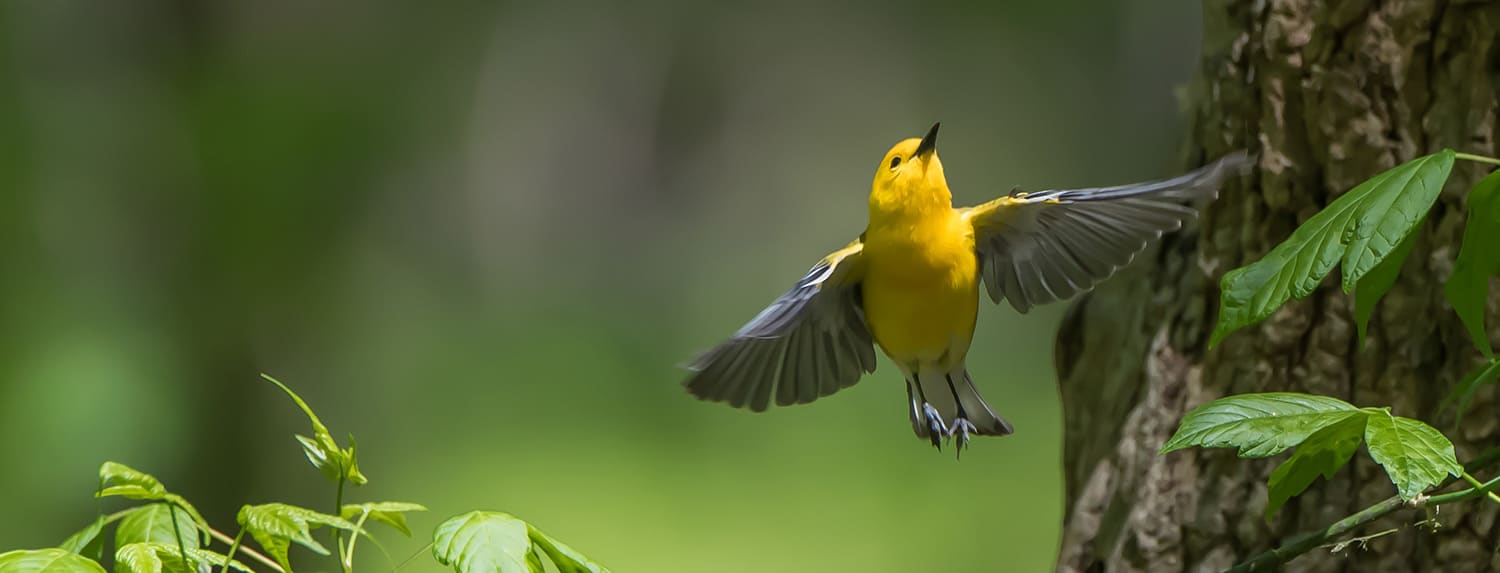Bird Identification takes time.
Only extensive field experience can elevate your identification skills to a high level. The difficulty in identifying birds scares many people from pursuing the hobby, but there are a number of things that can help you in your quest. The field guide is a valuable tool, but it must be remembered that you will almost never see the bird close up for a prolonged period of time. Often lighting is poor making determination of color poor, and size is difficult to determine at a distance. Experience in the field makes it easier and easier to spot a bird even under adverse viewing circumstances.
When you find a bird, don’t look at the field guide at this time.
This is the most common error made by beginning birders. Spend time noting as many characteristics as you can. There is a tendency to look at the field guide too soon, and that’s when the bird flies off. You want to have a good mental picture of the bird first; otherwise there is a tendency for something you see in the guide to start distorting your mental picture of what you observed. The more characteristics you observe, the greater the chance of identifying the bird later. With a good observation, you can frequently later narrow down possibilities in the guide to make a good identification.
Birds are identified by a number of characteristics, and it is the combination of all of these that makes identification not only possible but easy at times:
- Song and Call Notes – Particularly during spring, song is often the best way to identify a bird. The bird may be hidden from view, but it can be heard. with practice you can learn many common bird songs. The Peterson Birding by Ear Series is an excellent way to learn to differentiate songs.
- Beak – A bird’s beak determines what it eats. A warbler and finch are both small birds, but are easily told apart by bill. The finch has a heavy bill for crushing seeds, and a warbler has a fine bill for capturing insects.
- Habitat – Once you learn what birds are found in a particular habitat, identification becomes much easier. A sparrow is a grassland or edge bird, and a warbler is generally a forest bird.
- Range – Know what birds are likely to be found in your area. Looking through the 50-100 likely birds is much easier than the 800+ in the field guide.
- Size – Is the bird smaller, the same size, or larger than a robin? This can be misleading unless you have another known bird to compare your bird to. A grackle can look like a crow from a distance. Relative size helps narrow the identification down.
- Head Markings – Look for eye strips, rings around the eye, or crown stripes.
- Rump Patches – Like a harrier, flicker, or yellow-rumped warbler.
- Tail Markings – The tail is key for a number of birds. Tail bands/markings are key in identifying some raptors and others such as the Eastern Kingbird and American Redstart.
- Wing Bars – A number of birds have bars on the wings.
- Basic Shape – With experience, you will learn to identify birds by their basic body shape. “That distant bird looks like a wren.”
- Flight Pattern – Does the bird fly straight like a dove or does it undulate up and down like a woodpecker or finch?
- Wing Shape and Tail Length – These are critical in differentiating birds of prey.
- Behavior – Does it climb up a tree like a woodpecker or down like a nuthatch? Does it feed on the ground? Does it fly out from a perch and back again like a flycatcher? Does it bob its tail?
- Color – Even though this is what jumps out at you from a field guide, it is often unreliable. An Indigo Bunting is a beautiful blue bird, but against a bright sky, it’s a small black bird.
Every time you find a new bird, write down in a journal how you identified it.
What characteristics led you to the proper ID? Spend some time later on looking at it in the field guide. Once again, which of the characteristics in the guide did you see?

